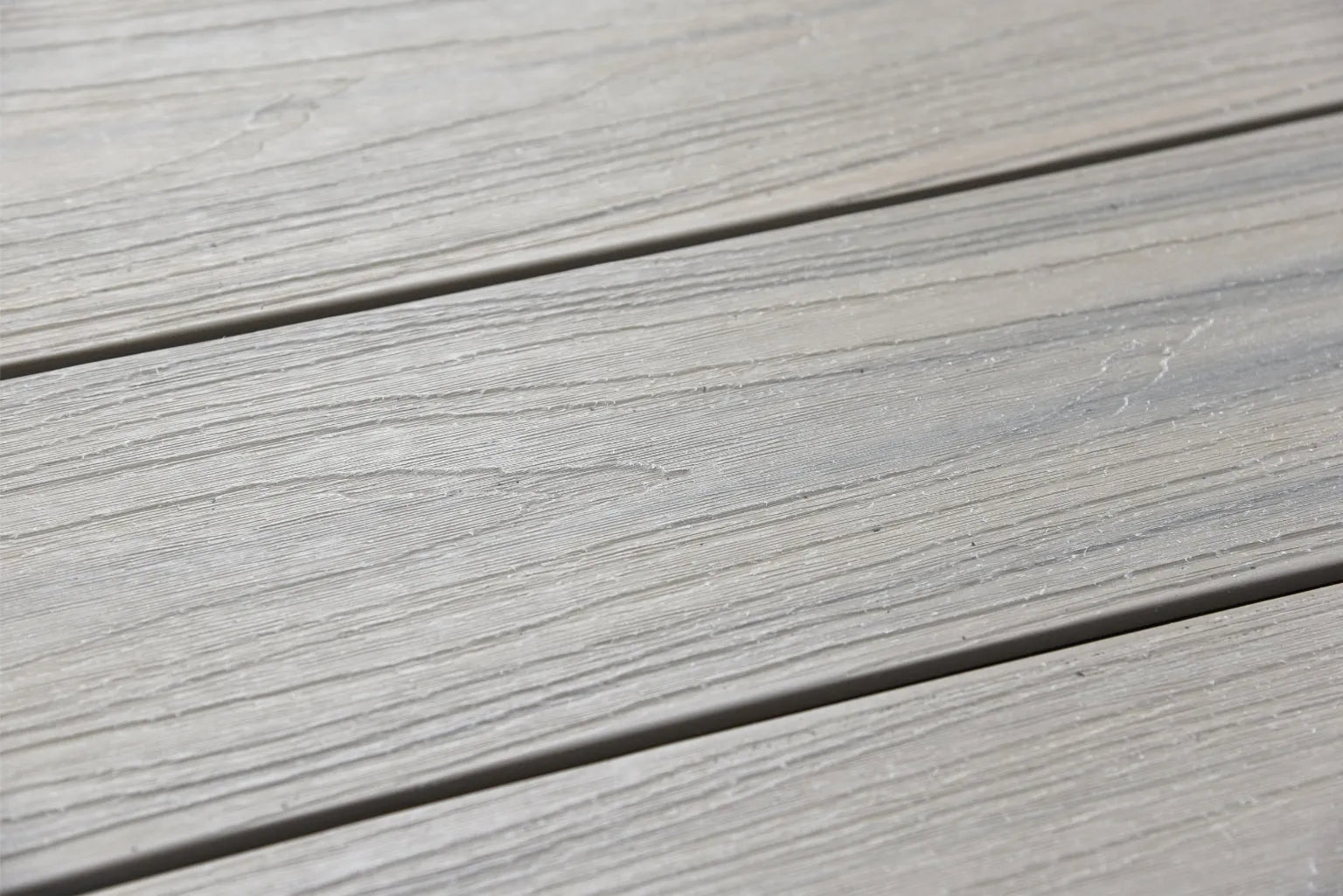Building a deck starts with choosing the material. Would recycled composite suit the site or a more classic wood option?
Traditionally, there are three key factors in choosing decking materials: application, shade, and wear. In recent years, ecological considerations have also become a fourth factor.
Regarding the application and shade, it is important to consider the surrounding environment of the deck area – what materials and surfaces are around? Should the decking material stand out sharply with its uniqueness or blend seamlessly in color with its surroundings? Wear, on the other hand, refers to durability: for example, pressure-treated wood lasts 3-5 times longer outdoors compared to untreated products.

The deck crowns the yard of a cottage, detached house, or terraced house alike.
Wood is a classic choice for decking material
Popular decking materials among Finns include pressure-treated wood, thermally modified wood, larch, and spruce. Pressure-treated wood is made from pressure-treated pine and is typically available in greenish and brownish shades. The rot resistance of pressure-treated wood is 3–5 times better than untreated wood.
Thermally modified wood, on the other hand, is made by modifying wood at temperatures above 160 degrees, which improves the material's rot resistance, weather resistance, and thermal insulation properties, and reduces the wood's moisture movement. At such a high temperature and in steam, resin is also removed from the wood fibers.
Larch grows throughout Russia and as a material it is very dense: it weighs up to 40 percent more than normal Finnish spruce or pine. The high density and resin content significantly improve the wood's biological durability and also somewhat affect its rot resistance.
Our selection includes the new ecological Pauha decking board, which is made in Kalajoki from domestic spruce. Pauha is completely non-toxic and waste pieces can be disposed of by burning. A special feature of the gray-toned Pauha decking board is brushing: the surface is brushed to bring out the most wear-resistant part of the wood. The brushed surface is not slippery even when wet.

Pauha is product-developed especially for building terraces and outdoor stairs and to withstand the changing conditions of the North.
Composite is a new era in terrace construction
Wood composite is a recent phenomenon in Finland, although it is a domestic invention. Its raw materials are recycled plastic and wood fiber, so using wood composite is practically true recycling. Wood composite is a very authentic wood imitation that withstands Scandinavian weather conditions excellently. Unlike wood, it requires no surface treatment or maintenance, so annual terrace care tasks like oiling and wood protection treatments can be forgotten. Composite decking can be cleaned with a pressure washer or even a brush. One of the most significant benefits of wood composite is its durability: it does not gray in sunlight but remains intact for decades.
Centin wood composite materials are naturally completely PVC-free. We always pay attention to ease and visual appeal in our products – that's why installation is done with hidden fastenings, making the attachment points inconspicuous. The gray Ulkokalla wood composite decking is available with either a 3D wood grain or a more traditional grooved surface. In the new cased Särkkä wood composite decking you can choose your preferred color for the terrace from different sides of the board, antique gray or anthracite.

Wood composite is a terrace material that retains its shape and color for decades.
Explore our other terrace products from this link!



